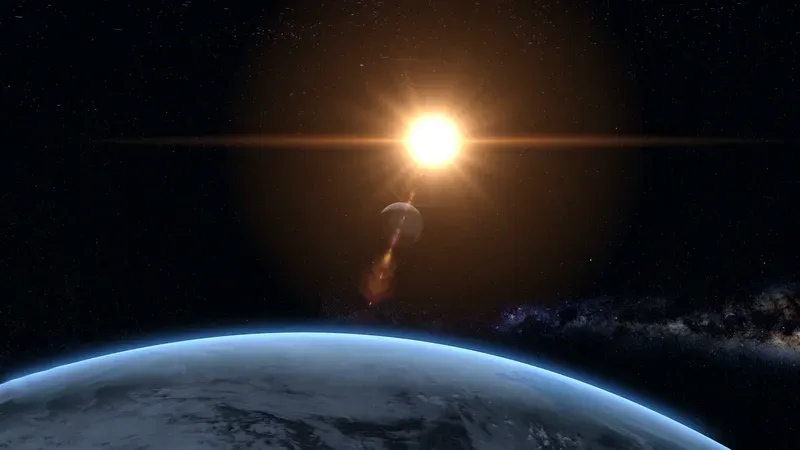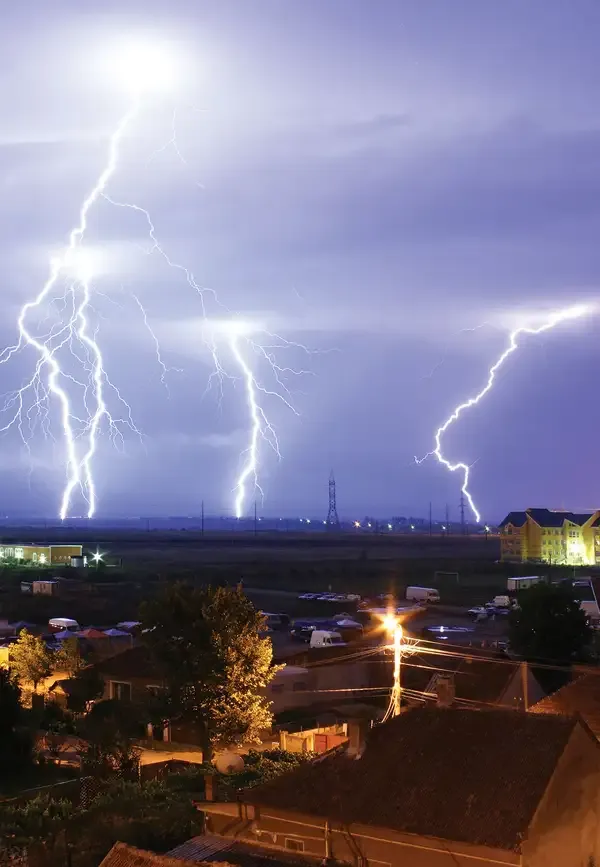- Home >
- Science
- > Technology
What Causes Lunar and Solar Eclipses?
Lunar and solar eclipses occur due to the alignment of the Earth, Moon, and Sun. A lunar eclipse happens when the Earth is directly between the Sun and the Moon, casting a shadow on the Moon. A solar eclipse occurs when the Moon is positioned between the Earth and the Sun, blocking sunlight and casting a shadow on the Earth. These celestial events depend on the precise orbits and alignments within the Earth-Moon-Sun system.

The Science Behind Eclipses
Eclipses are fascinating celestial events that capture the attention of sky watchers around the world. They occur when one astronomical body moves into the shadow of another, leading to two main types: lunar and solar eclipses. Understanding what causes these phenomena requires a closer look at the positions of the Earth, Moon, and Sun.
What is a Lunar Eclipse?
A ''lunar eclipse'' occurs when the Earth passes between the Sun and the Moon, causing the Earth's shadow to cover the Moon. This alignment can only happen during a full moon when the Sun, Earth, and Moon are nearly in a straight line. There are three types of lunar eclipses:
| Type of Lunar Eclipse | Description |
|---|---|
| Partial Lunar Eclipse | Only a portion of the Moon enters the Earth's shadow. |
| Total Lunar Eclipse | The entire Moon enters the Earth's shadow, often appearing red due to Rayleigh scattering. |
| Penumbral Lunar Eclipse | The Moon passes through the Earth's penumbral shadow, causing a subtle shading. |
The reddish hue that often accompanies a ''total lunar eclipse'' is sometimes referred to as a "blood moon." This phenomenon happens because the Earth's atmosphere scatters sunlight, allowing only the longer wavelengths (red light) to reach the Moon.
What is a Solar Eclipse?
A ''solar eclipse'' occurs when the Moon moves between the Earth and the Sun, blocking all or part of the Sun's light. This alignment can only take place during a new moon. There are three primary types of solar eclipses:
| Type of Solar Eclipse | Description |
|---|---|
| Total Solar Eclipse | The Moon completely covers the Sun, and the day turns into night for a brief moment. |
| Partial Solar Eclipse | Only a part of the Sun is obscured by the Moon. |
| Annular Solar Eclipse | The Moon covers the Sun's center, leaving a ring-like appearance known as the "ring of fire." |
The ''total solar eclipse'' is a spectacular sight as it allows observers located in the path of totality to witness the Sun’s corona—the outer atmosphere—glowing around the dark silhouette of the Moon.
Why Don't Eclipses Happen Every Month?
Even though both lunar and solar eclipses are related to the alignment of the Earth, Moon, and Sun, they do not occur every month due to the tilt of the Moon's orbit. The Moon's orbit is inclined about 5 degrees to the Earth's orbital plane, known as the ecliptic. As a result, the three bodies rarely align perfectly.
For an eclipse to happen, the Moon must be at one of its two nodes, where its orbit crosses the ecliptic plane. These nodes only occur approximately every six months, known as an eclipse season. During these periods, both ''lunar'' and ''solar eclipses'' can occur, but outside of these times, eclipses are not possible.
Frequency of Eclipses
Eclipses are relatively rare events. On average, there are about 5 to 7 eclipses of the Sun and Moon each year. However, the visibility of these eclipses varies significantly depending on geographical factors.
| Eclipse Type | Frequency per Year |
|---|---|
| Lunar Eclipses | 2 to 5 |
| Solar Eclipses | 2 to 5 |
While lunar eclipses can be observed by anyone on the night side of the Earth, solar eclipses are only visible along a narrow path on the Earth's surface known as the path of totality. Watching a ''solar eclipse'' safely requires special glasses or viewing methods to protect the eyes from the Sun’s harmful rays.
Conclusion
Understanding what causes lunar and solar eclipses enhances our appreciation for these breathtaking celestial events. Lunar eclipses result from the Earth casting a shadow on the Moon, while solar eclipses occur when the Moon blocks the Sun's light. While they are not frequent, the awe they inspire is timeless. Whether you are an avid astronomer or a casual observer, marking your calendar for these events can provide a unique opportunity to witness the wonders of our universe.












